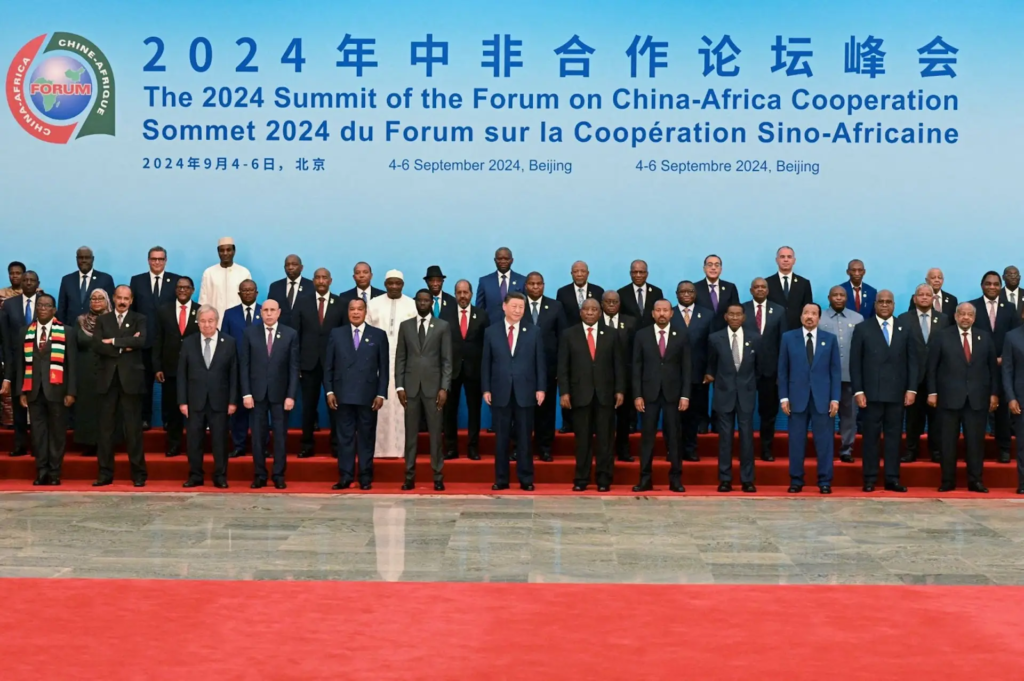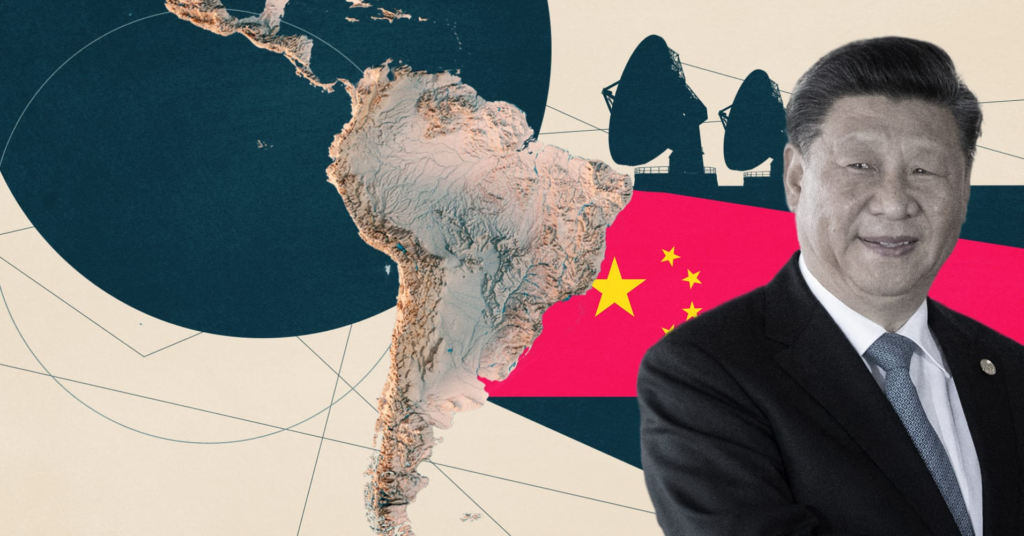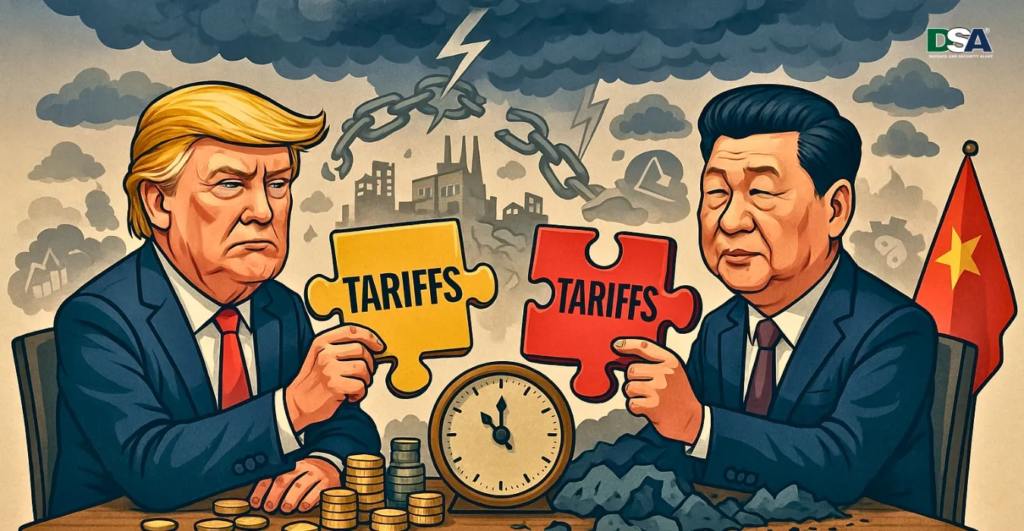In September 2024, Chinese President Xi Jinping announced a massive $50 billion investment plan for Africa, sparking global attention and raising eyebrows in Washington. This pledge, made at the Forum on China-Africa Cooperation (FOCAC) in Beijing, promises financial support, infrastructure projects, and job creation across the continent over the next three years. While African leaders welcomed the move, the United States is growing increasingly wary of China’s expanding influence in Africa, a region rich in resources and strategic importance. As 2025 unfolds, this investment is intensifying the U.S.-China trade rivalry, with both powers vying for dominance in Africa’s rapidly growing markets.

What Is China’s $50 Billion Plan?
China’s latest commitment includes 360 billion yuan (roughly $50.7 billion) in financial assistance, with over half allocated as credit lines and at least $10 billion coming from Chinese companies’ investments. The plan also includes smaller sums for military aid, clean energy projects, and other initiatives. Xi emphasized cooperation in infrastructure, agriculture, trade, and industry, aiming to create at least one million jobs in Africa. Additionally, China promised to support 30 infrastructure projects, 30 clean energy initiatives, and even nuclear technology collaboration to address Africa’s chronic power shortages.
This isn’t China’s first big move in Africa. Since the early 2000s, China has been the continent’s largest trading partner, with trade volumes hitting $282 billion in 2023. Through its Belt and Road Initiative (BRI), China has financed roads, railways, ports, and power plants across Africa, transforming skylines and connecting remote regions. However, this new $50 billion pledge signals a shift toward smaller, more sustainable projects—described by Chinese officials as “small and beautiful”—alongside a focus on industrial development and job creation.
African leaders, from Kenya’s William Ruto to South Africa’s Cyril Ramaphosa, have praised the plan. For many African nations, China’s investments fill a critical gap in infrastructure funding, estimated at $130–170 billion annually by the African Development Bank. Projects like Kenya’s Standard Gauge Railway and Nigeria’s Kano-Maradi rail line highlight China’s role in boosting connectivity and economic growth.

Why Is the U.S. Concerned?
The United States sees China’s growing footprint in Africa as a challenge to its own influence. Africa, with its vast reserves of critical minerals like cobalt, copper, and lithium, is a key player in global supply chains for technology and renewable energy. As China secures mining deals and builds infrastructure, U.S. policymakers worry about losing access to these resources and strategic markets.
In 2025, the U.S.-China rivalry is heating up under a new U.S. administration. The second Trump administration, which took office in January, is expected to prioritize countering China’s influence, particularly in Africa’s mineral sector. The Biden administration laid some groundwork, with initiatives like the Lobito Corridor railway project in Angola, backed by $600 million in U.S. funding. However, China’s decades-long head start and deeper financial commitments dwarf U.S. efforts.
U.S. concerns also stem from fears of “debt-trap diplomacy.” Critics argue that China’s loans, often with opaque terms, burden African nations with unsustainable debt. Sub-Saharan Africa owes China over $134 billion, and countries like Zambia and Ethiopia have sought debt relief in recent years. The U.S. and its allies worry that defaulting nations could lose control of key assets, like ports or mines, to Chinese creditors, giving Beijing strategic leverage.
Beyond economics, there’s a geopolitical angle. China’s military aid, including a $1 billion grant and training for 6,000 African military personnel, raises concerns about its long-term security ambitions. The U.S. fears that Chinese-built ports, like Djibouti’s, could become naval bases, expanding China’s military reach in the Atlantic and Indian Oceans.

The Trade Rivalry in 2025
The U.S.-China trade war, marked by tariffs and sanctions, is spilling into Africa. In 2024, the U.S. trade deficit with China reached $295.4 billion, and new tariffs under Trump are expected to escalate tensions. Meanwhile, Africa’s trade deficit with China grew to $82.68 billion in 2023, driven by a flood of Chinese imports like electronics and apparel. These imports often outcompete local industries, stunting Africa’s manufacturing growth.
The African Continental Free Trade Area (AfCFTA), launched in 2019, aims to boost intra-African trade and reduce reliance on external powers. However, China’s dominance threatens this vision. Cheap Chinese goods undermine local producers, while U.S. trade frameworks like the African Growth and Opportunity Act (AGOA) offer limited relief, with U.S.-Africa trade at just $67 billion in 2023.
For African nations, the rivalry presents both risks and opportunities. Aligning too closely with China could reduce U.S. investment, as seen in Kenya, where Chinese funding for telecom and energy has waned amid U.S. security partnerships. Conversely, countries like Angola benefit from competing offers, with both powers investing in the Lobito Corridor. African leaders must navigate this tug-of-war carefully to maximize benefits while preserving sovereignty.
What Does This Mean for Africa?
China’s investments have undeniable benefits. Roads, railways, and power plants have improved connectivity and fueled economic growth in countries like Ethiopia and Nigeria. The $50 billion pledge could further modernize Africa, supporting industrialization and job creation. For example, Zimbabwe secured deals for avocado exports and mining cooperation, while Kenya gained market access for agricultural goods.
However, challenges loom. Heavy debt burdens strain African economies, with repayment issues sparking public backlash in countries like Kenya. Critics also point to environmental concerns and labor violations at Chinese-funded projects. Moreover, China’s focus on resource extraction—especially minerals—raises fears of neo-colonialism, echoing the continent’s colonial past when European powers plundered its wealth.
African governments are pushing back. Some, like Senegal, demand greater transparency in loan agreements. Others are diversifying partnerships with the U.S., Japan, and the EU to balance China’s influence. The AfCFTA could also strengthen Africa’s bargaining power by fostering regional trade and industrial clusters.
Can the U.S. Catch Up?
The U.S. is playing catch-up, but it’s not out of the game. The Partnership for Global Infrastructure and Investment (PGII), launched by the G7, aims to rival China’s BRI with sustainable, transparent projects. Biden’s 2024 Angola visit signaled a renewed U.S. focus on Africa, and Trump’s dealmaking approach could accelerate investments in strategic sectors like minerals.
To compete, the U.S. must address Africa’s priorities: infrastructure, jobs, and market access. Unlike China’s state-driven model, U.S. investments rely heavily on private firms, which often shy away from risky African markets. Strengthening AGOA, streamlining trade regulations, and investing in education and skills training could make U.S. partnerships more appealing.
Looking Ahead in 2025
As China rolls out its $50 billion plan, the U.S.-China rivalry will shape Africa’s future. For African nations, the challenge is to leverage these investments without becoming pawns in a global power struggle. Strategic diplomacy, transparent agreements, and regional cooperation through AfCFTA will be key to ensuring that Africa benefits from both powers’ attention.
The stakes are high. Africa’s population is projected to double by 2050, with 80% of that growth in cities. Infrastructure and jobs are critical to harnessing this demographic dividend. Whether China’s investment becomes a debt trap or a development catalyst depends on how African leaders negotiate their partnerships. Meanwhile, the U.S. must move beyond rhetoric and deliver tangible investments to remain a viable partner.
In 2025, Africa stands at a crossroads. The U.S.-China rivalry could either fuel a new era of growth or entangle the continent in geopolitical tensions. For now, the world is watching as China’s $50 billion bet reshapes Africa—and the global balance of power.
Must Read :- Jayden Daniels Shines as a Potential Star for 2028 Olympic Flag Football






